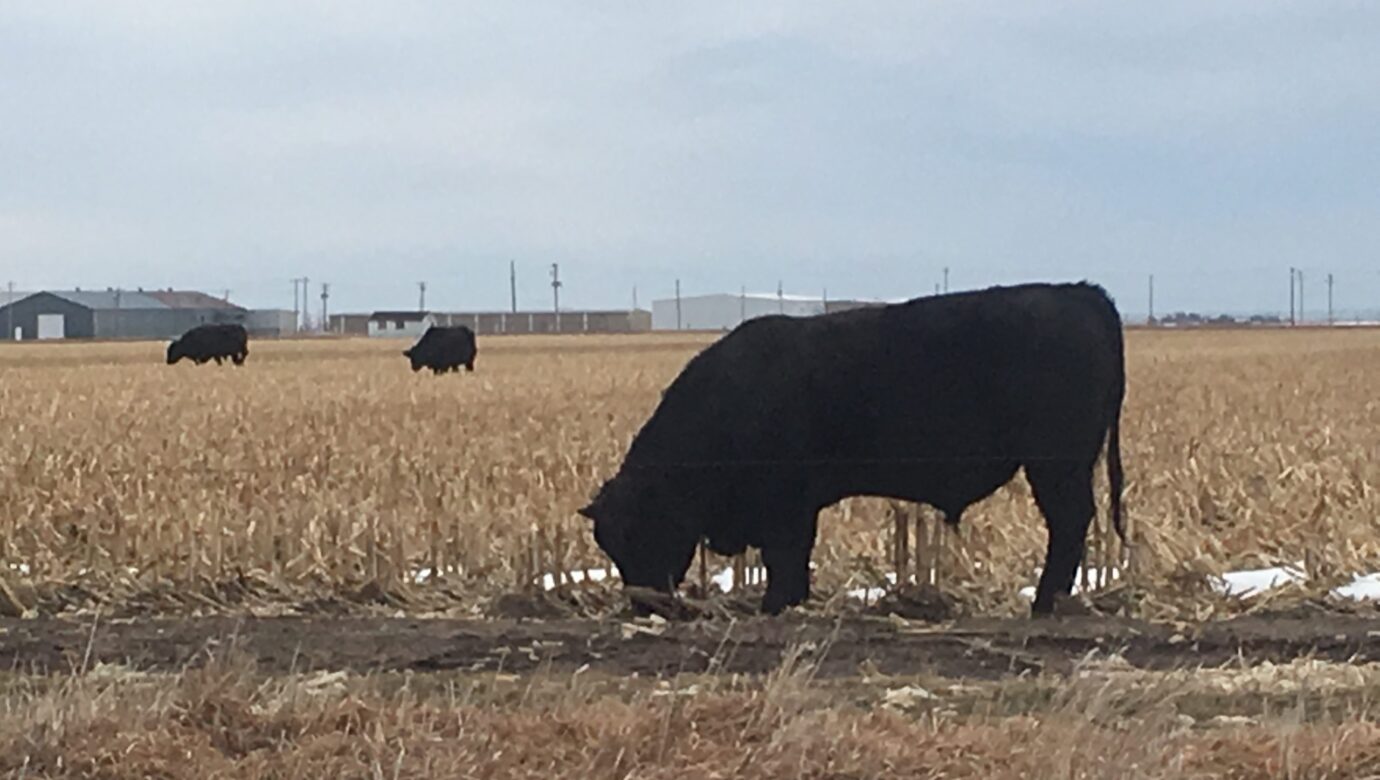
Forage Creativity: Soy-Corn Silage
Here at Ward Laboratories Inc., we often encourage producers to be creative and try newapproaches to agricultural production. A couple of weeks ago at the American Society of Animal Science Midwest meeting in Omaha, I listened to a talk about getting more creative with corn silage: “Production of High-Quality Forage through Unique Forage Blends” presented by Dr. Ishwary Acharya. Ward Laboratories Inc. tested 1,451 corn silage samples and 2,197 total silage samples of all types in 2016. So, I have seen the range and variation in the nutrient quality of silages used in the area. Dr. Acharya’s research focused on making the best possible silage for a dairy operation, as he stated in his talk, “the ultimate measure of forage quality is milk production”. Being in central Nebraska, I think his research could not only increase the nutritional content of the silages produced, but also the value of grazing the cornstalks by a beef enterprise after harvest.
The idea behind Dr. Acharya’s presentation was to double crop corn and vining soybeans to produce high protein low fiber silage without sacrificing yield. First, to produce the best possible corn silage, the crop was chopped higher than producers typically chop corn silage. This resulted in less stock and more leaves, husks, and cob in the silage. Therefore, yield was compromised for higher protein and lower fiber concentrations. The second part of the presentation explained that to overcome the sacrifice of yield, vining soybeans could be intercropped with the corn. Therefore, when chopping for silage at a higher level, the soybean plant material made up for the loss of stocks in the yield. In this study, the resulting silage had increase yield, forage quality, and protein compared with typical corn silage. Dr. Acharya interseeded the vining soybean at various rates and determined that the optimal rate was somewhere between 67% corn 33% soybeans and a 50:50 mix. The study also looked at the optimal time for fermentation based on pH and presence of volatile compounds that have affect on rumen function and animal performance. At 60 days of fermentation Dr. Acharya determined that fermentation had not gone to completion and the silage should be ensiled for at least a 90-day period. This finding agrees with other literature I have read on the topic.
Dr. Acharya’s idea of double cropping to create a high-quality forage source for dairy cattle could also be of benefit to beef cow calf pairs grazing the remaining corn stalks. If soybeans were intercropped, I would predict that there would be some beans and vining materials left in the field which would be higher in protein and lower in fiber than the corn stalks alone. Of course, I would advocate that producers test both their silage and try to get a representative idea of what has been left on their field to provide necessary supplementation. For the silage, I would recommend testing crude protein, acid detergent fiber to predict energy values and neutral detergent fiber to predict dry matter intakes at a minimum noting that the sample would need to be ran as a wet chemistry feed test and that the addition of soybean to the silage would not allow for a reliable and accurate NIR scan. For the grazing stocks and soybeans, I would run the same test to get an idea if protein or energy supplementation are necessary. I would also caution that soybeans do contain urease and we typically do not graze cattle on soybeans fields as they risk urease toxicity if they have recently consumed non-protein nitrogen (NPN), therefore when considering supplementation strategies for cattle grazing a field of cornstalks intercropped with vining soybeans, lick tubs or mineral mixes with urea could not be utilized.
As, with any novel feed, always monitor animal body condition, production and health to ensure it is providing the nutrients required. Don’t be afraid to try something new. It might be of benefit to your operation weather it is vining soybean corn silage or grazing cover crops or feeding from the waste stream, feed testing and good ration and diet formulation can lead to success of a livestock operation.
